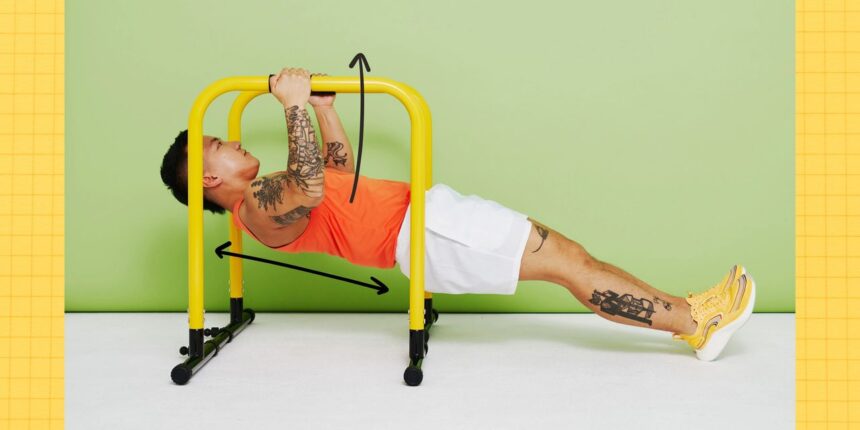If you’re serious about strengthening your back, but don’t have weights at your disposal, might we suggest the inverted row? This bodyweight exercise—which involves lying beneath a bar and pulling yourself toward it while keeping your body in a straight line—is a surefire way to ignite a ton of upper-body pulling muscles while also smoking your core too. That motion can help build strength that translates over to tons of daily tasks, like walking an energetic dog or opening a heavy door, to name a few.
Evan Williams, CSCS, CPT, founder of E2G Performance and strength and conditioning coach for the Milwaukee Bucks, has both his general population exercisers and professional athletes do the inverted row in their workouts. “It’s a good alternative to the traditional pull-up,” he tells SELF. And unlike the classic pull-up, which is a pretty advanced move, there are tons of ways to scale the inverted row to varying fitness levels, making it accessible to a bunch of different exercisers.
Below, all you need to know about this stellar move, including which muscles it works, how it compares to the pull-up, the best inverted row alternatives, and how to do inverted rows at home.
What muscles does the inverted row work?
When it comes to the muscles worked in the inverted row, the biggest is your latissimus dorsi (lats, the broadest muscle in your back), Williams says. You’ll also fire up your rhomboids (upper back muscles that attach to your shoulder blades) and trapezius (traps, another upper back muscle that attaches to the shoulder blades, and also extends up into the neck), he adds. Your arms get in on the action too, with your biceps working to complete the pulling motion. And so does your core, Williams says, since your midsection helps stabilize your body as you complete your reps.
Are inverted rows better than pull-ups?
The inverted row and the pull-up work pretty much the same muscles, Williams says, so it’s only natural to wonder how they stack up to each other.
The truth? The inverted row isn’t “better” than the pull-up, Williams says. It’s just different. The inverted row works more horizontal pulling strength and power, which comes in handy for everyday tasks like walking a dog that’s really tugging on the leash or heaving open a big door, he explains. And the pull-up hones your vertical pulling strength and power, which translates to things like climbing a rope or scaling a rock wall.
The traditional pull-up delivers more of a challenge to your back and arm muscles than the traditional inverted row because you’re pulling your full bodyweight (versus just a portion of it), so if you’re wanting to really maximize your strength and power gains, the pull-up might be the way to go. (That said, there are many ways to crank up the intensity of the inverted row—for example, by elevating your legs on a box or step or adding a weight vest for increased resistance, Williams says.)
Read the full article here



